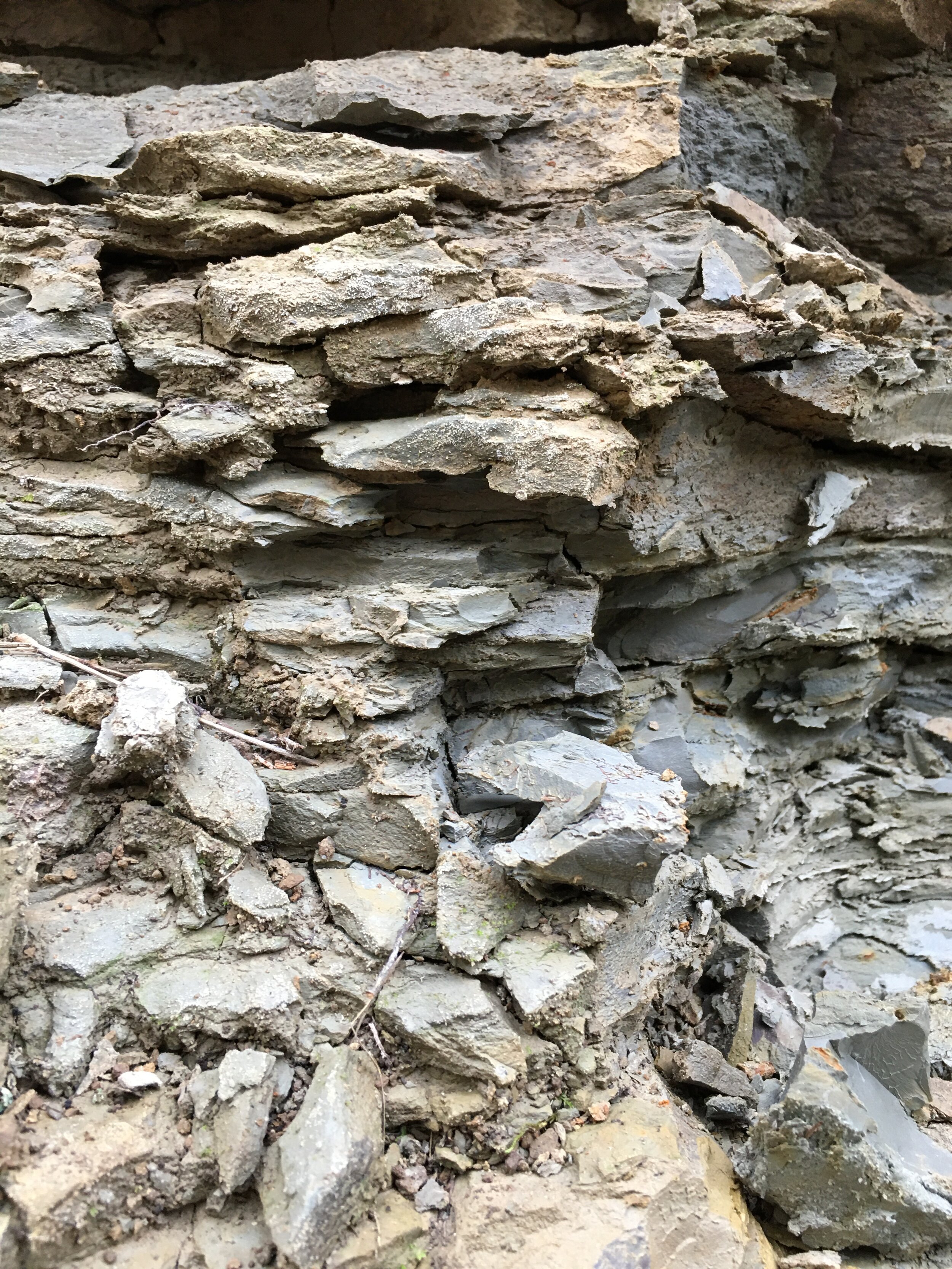Clay Deposits
Adam Mysock showed me where to look to find the clay in French Park. He grew up in these tucked away places. The gray-blue clay deposit is laid to rest away in the side of a small hill that has been cut away by years of water flow. How long has the water flowed here? This is the place nature lives in a balance of creation and destruction, a constant ebb and flow.
I grew up playing in beds just like these. This bed of rocks, mud, and water reminded me of the dry runs and stream I also grew-up in. I would wander down the hill that made up our back yard. The shallow dry run would turn into the deep cut valley of the bluff if you followed it long enough. Walls of towering dirt and sandstone watched me move through my childhood. Whether you’d like to call it nostalgia or comfortable familiarity, I am still looking for these kinds of places.
Old gods live in places like these. The trees reach over the rocky water swept stone way. In these beds of trickling water and mud, old things live; Small gods, as Jim Harrison called them. Silent observers of the world in its whole. In these beds, rocks have watched oceans fill the Ohio basin, then recede over millions of years to fill again and recede. Time washes over this place. I feel as though I must hold on to the ground to keep myself from being swept into the riptide.
I can see it in the forest floor. Time is scattered everywhere, and some of it holds the footprints of the life it once held. Being in the forest, signs of life can be seen everywhere. In this place the signs of life present and past are hard to miss. All times come crashing together. We all ride into the future on the back of the present.
The stones under foot hold on to millions of years of history until the wind and sand and frost take it away to make the next generation of stone. They are broken down, layered over and then pushed back to the surface again and broken down. Even stones die, and even their death give to the next generation. Just as how when a tree dies it gives its nutrients back into the earth to give to their young trees. It is like how the pinecone needs the forest to burn to release its seeds.
The clay comes out of the wall of earth in dark flat sheets. It is not wet, and it is not dry. It is wet enough to be dark, yet dry enough to be firm and crumble under pressure. As I examine these dark clumps in the studio, I can see how finely the earth has filtered this material. Clay is the finest form of silt, sand being the next step of granular forms. Looking at this material I can feel the raw energy it holds. It is a quiet energy, like soil, but it is potent. It slept for millions of years, waiting to be turned into stone. That is, until I came to wake it up and collect its small pieces. Ghosts of time now haunt my studio. They are welcome guests.